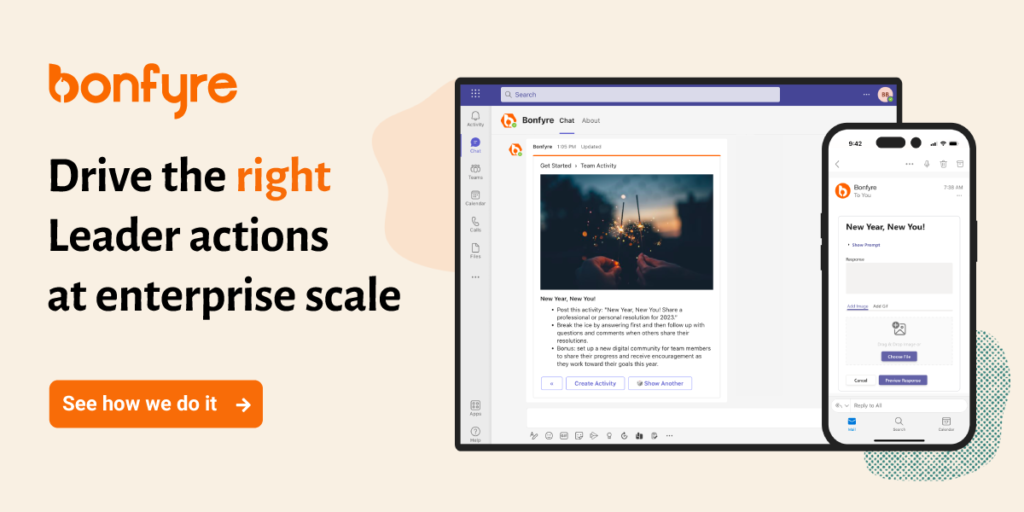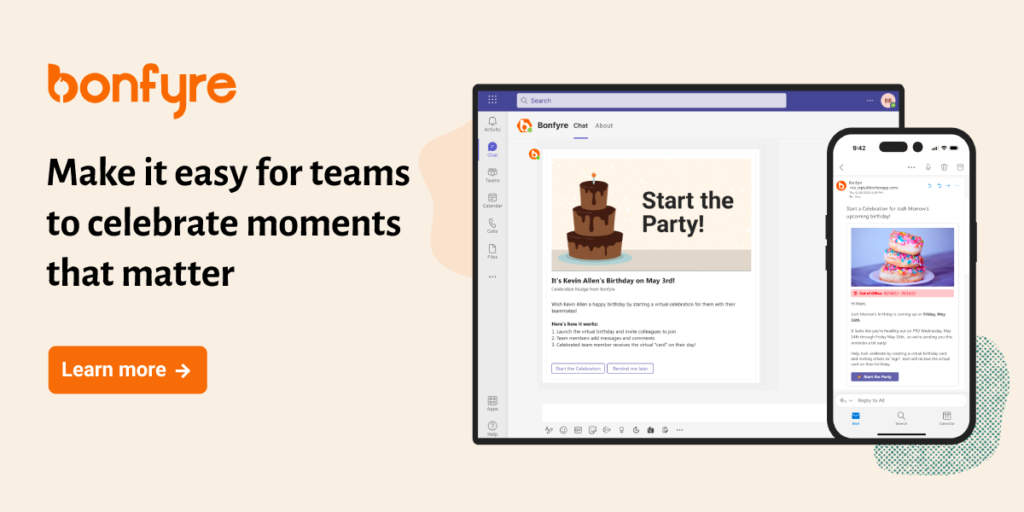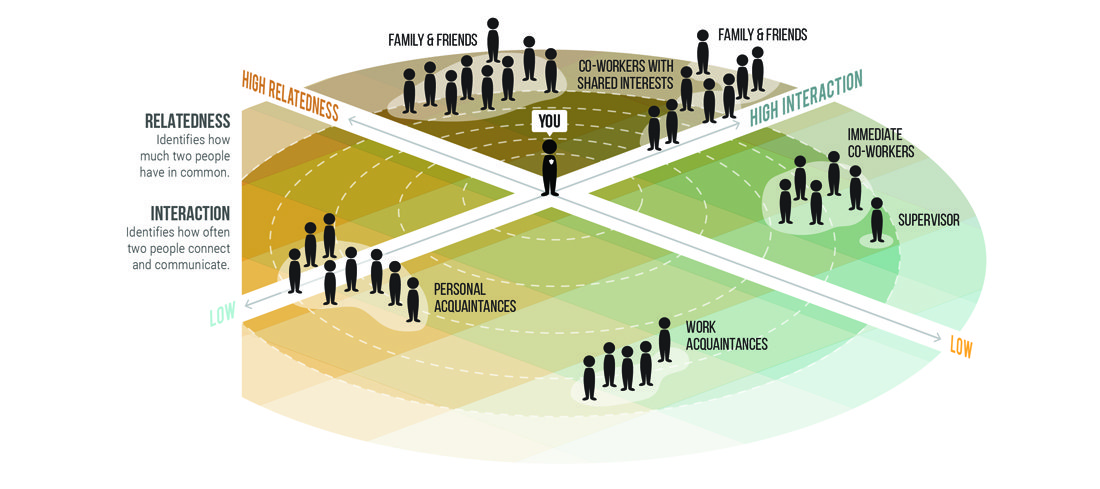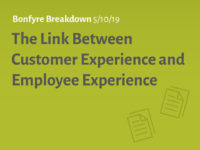If your employee engagement initiative doesn’t include a focus on relationships in the workplace, odds are your initiative isn’t working out very well for you.
Workplace relationships are the tipping point upon which many matters important to managers and HR personnel balance. In SHRM’s 2016 Employee Job Satisfaction and Engagement Report, relationships with coworkers were identified as the top driver of employee engagement, with 77% of participants listing these connections as a priority.
In addition to engagement, the quality of these connections can have a major effect on company loyalty, job satisfaction, productivity, and more. When employees have strong relationships in the workplace, you’re more likely to see prosocial behavior like collaboration and camaraderie occur. Employees are more likely to feel a stronger sense of loyalty to their company and each other, and perceive more psychological value in their daily work.
If you want a high-functioning workforce, you want a relationship-centric organization, which means you need to understand the forces that impact the workplace relationship spectrum.

What types of workplace relationships matter?
Every individual on the relationship spectrum contributes to how employee engagement is shaped in their work environment. Relationships in the workplace are a byproduct of two primary factors: interaction, how often two people connect and communicate, and relatedness, or how much two people have in common. Relatedness cannot be discovered without some degree of interaction for obvious reasons; if two employees never interact, they never have the opportunity learn about their common interests.
The chart below displays where different varieties of relationships fall on this spectrum. For example, a coworker with similar interests that you collaborate with regularly would rank high in both relatedness and interaction. Conversely, an acquaintance from another department might rank low in both areas.
The value an individual employee assigns to their work, and their role in a company, isn’t determined by that individual alone, but rather by a value system that every employee contributes to via interpersonal communication. People high in relatedness and interaction have the biggest effect on an individual’s engagement, as they’re more closely connected and are able to provide accurate appraisal of that employee’s performance.
But the people on the periphery of this spectrum—those low in relatedness and interaction—also make an important impact on engagement. Although day-to-day interaction may be limited, these employees nevertheless share the same physical and digital spaces that you do. Through basic verbal and nonverbal cues, these people communicate the value they see in their peers’ work. Even something as simple as a smile is enough to convey a sense of gratitude and appreciation in others. By extension, the absence of these cues would communicate the opposite.
The key to maximizing engagement levels is to put these relationships at the center of your work environment. Remove barriers preventing communication and create a space where employees are free to build common connections around the things they care about most.
What does a relationship-centric workplace look like?
All workplace relationships are important, but when it comes to relationships between employees high in relatedness and interaction, you don’t want an environment where those employees can become good, or even close friends. You want an environment where they can become best friends.
According to Gallup, employees with a best friend at work are 40% more likely to have been praised for the quality of their work the week prior, and 27% more likely to report work empowered them to do what they do best daily. These employees are even more likely to assist each other in times of duress, and exhibit healthier levels of stress management.
So what does this sort of workplace look like? Simply put, it looks like a place where employees want to connect beyond small talk and work-related matters. We’ve identified eight areas where you can begin to develop a relationship-centric focus.
1. Invest in face-to-face interaction
Although digital technology has enabled us to chat from anywhere in the world, you can’t put a price on face-to-face interaction. 93% of the information we convey is through nonverbal expressions and tone of voice. If possible, consider rearranging your office space in thoughtful ways that encourage more face-to-face interaction. Company-wide events are also great for facilitating discussion and bringing employees together. If you have remote employees, and chances are you do (37% of the U.S. workforce telecommutes), invest in video conferencing options.
2. Improve relationships with social tools
Face-to-face interactions can be augmented with social tools that strengthen personal relationships and enable frequent, consistent interactions regardless of time or location.
3. Plan meetings and events
Dedicate scheduled time for employees to come together around shared interests. Although these events are occurring at work, or at the least in relation to it, direct the focus of the events away from work-centric functions and onto shared commonalities to facilitate discovery of relatedness.
4. Exemplify the culture you crave
It’s not enough to say you want a positive culture. You have to live it. Establish patterns of consistent behavior that build a culture of positivity, inclusiveness, and belonging. If you’re earnest with your intentions and authentic in your practice, your employees will recognize your efforts and you’ll begin to see change in their interactions.
5. Offer recognition frequently
Consistently and frequently recognize progress and achievements among teams. We suggest you prioritize focusing on micro-recognition—small but frequent acknowledgements of success that come from both peers and management—over a top-down macro-recognition approach.
6. Consider employee input
People love what they create and co-creation is a powerful way to build relationships. Pull your employees into your decision-making process. Gauge their thoughts and act on the information they give you.
7. Address diverse and growing needs
Recognize growing workplace diversity and develop approaches that accommodate the breadth of their individual needs. Provide each employee the opportunity to shape their own experience.
8. Improve relationships with the right technology
Provide communication technology that’s designed to strengthen relationships and the emotional drivers of performance. A focus on driving performance at the expense of relationships will produce negative impacts, and often erode performance.
Placing human relationships at the center of the workplace takes a concerted, proactive effort on the part of corporate leadership. Although everyone plays a role in this process, change must first be demonstrated by an organization’s culture champions—leaders of HR, talent, and communications who have a personal investment in culture and engagement—before employees feel comfortable joining in.
Half measures are no longer an option; relationships in the workplace must move from the edges of company strategy and culture to the forefront if organizations are to survive an increasingly hypercompetitive, fast-paced global economy.




 5 min
5 min





